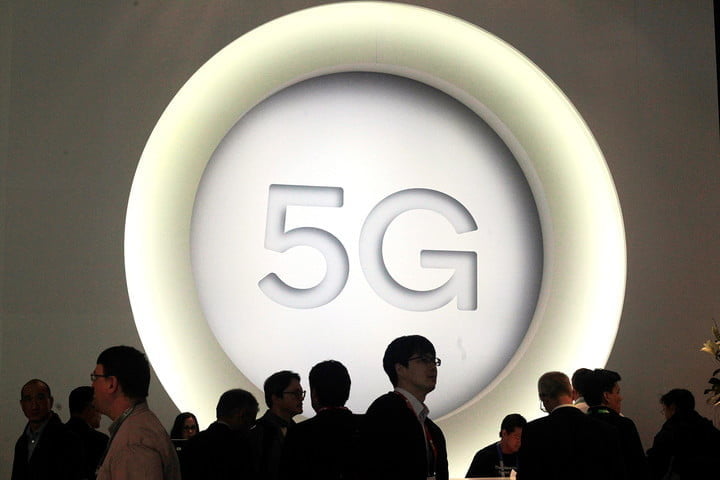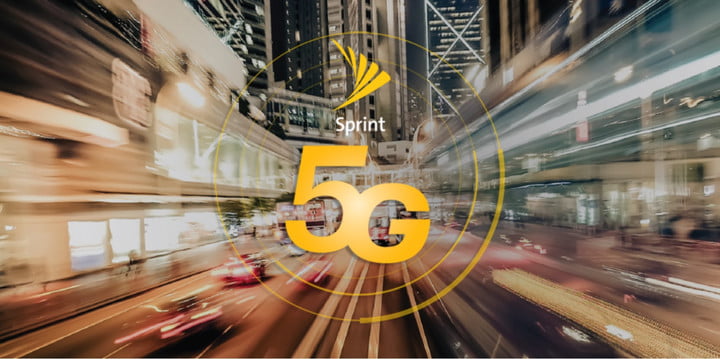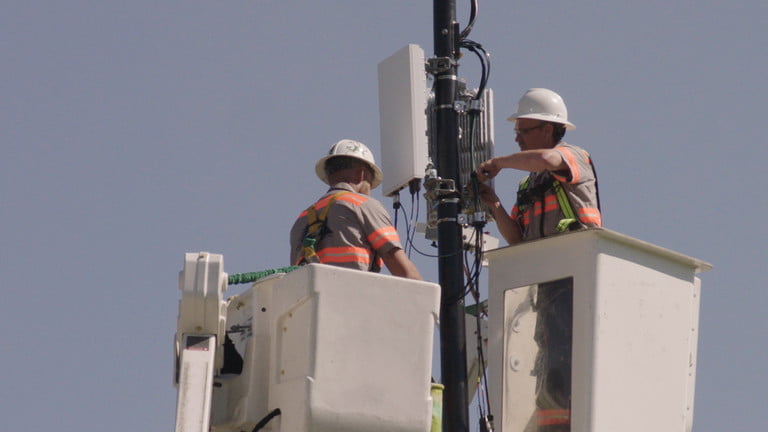
If 2019 was a coming out party for 5G networks, 2020 is the year you or someone you know signs up for the tech. The superfast new network is about to make a huge impact in the way we experience wireless connectivity. While often talked about in reference to mobile devices, 5G extends beyond that. It will apply to your everyday home internet connection, too — through something called fixed wireless. You’ll be hearing a lot about it in the coming year.
5G promises far faster speeds for mobile phones, and reduces the latency or delay inherent in most networks. That means communication will be instantaneous, VR will be as smooth as butter, and all sorts of crazy new concepts will be made possible. And with fixed wireless, all that technology comes right into your home. And you can get it today.
What is fixed wireless 5G?

So how does fixed wireless differ from traditional wireless internet? Well, for starters, in more traditional internet setups, a cable goes all the way to a house. The homeowner buys a router they can hook up, plugs it in, and updates as they wish.
With fixed wireless, there are no cables required. Instead, a “fixed” antenna is installed on the house, similar to how a satellite dish might be installed. This antenna then creates a wireless connection with a nearby wireless tower, which can connect to many antennas at the same time.
When the fixed antenna receives the signal, it can send the connection down a short cable and into the house, where it can link up to a router or other device as needed. Inside the house, once 5G devices are out in the world, you may not notice anything is different at all.
How does 5G service work?

Like other wireless connections, 5G does operate on the radio spectrum, but in a very different way from past wireless internet options. It can run on the low-band, mid-band, or high-band spectrum, and different carriers are already busy experimenting with different bands using their own technology.
As of now, most of the current interest is high-band spectrum 5G using millimeter wave (mmWave) technology. The result is a combination of beamforming and direct wireless connections with mobile devices. If you’ve read anything about MIMO — a technology that lets advanced wireless routers communicate with several devices at once — it’s helpful to think of 5G as a massively up-scaled version of a similar technology, able to deliver wireless connections to a whole geographic area.
You can learn much more about 5G applications with our guide here, but for now let’s talk about the main benefits of switching to this new wireless standard.
Reduced connectivity costs: Fixed line installation for high-speed internet is a big pain. In many urban areas, fixed-line infrastructure is so expensive to install and maintain that it’s not even worth it. Rural areas face similar problems due to such large installation spaces. 5G solves these problems by greatly decreasing the physical infrastructure needed to provide reliable internet. This should make reliable internet services available for many areas that previously had no access to it.
Faster speeds: Experiments with 5G wireless have yielded very high speeds, even up to 1,000Mbps.
Fewer latency issues: 5G has very, very low latency compared to other wireless connections. That’s convenient for consumers, but it also means that 5G can be used in many important professional tasks where a dependable connection is essential.
Lower energy use: 5G takes relatively little energy to connect and transmit data compared to current online connection options.
Expected speeds

We mentioned speeds of up to 1,000Mbps, but those are target speeds in highly controlled environments with technology that’s not entirely out on the market yet.
True fixed wireless 5G, as it’s arriving, will have speeds that are comparable to current average internet speeds – around 30Mbps to 300Mbps. That, of course, depends on the location and service being offered. Verizon, for example, promises speeds of around 300Mbps for its cellular service, and says some locations could see peak speeds of nearly 1Gb. In the future, as the 5G rollout continues, you can expect speeds to start increasing toward that 1Gb marker and perhaps beyond. Lab speeds have reached 4.5Gbps, although it’s difficult to know how long this will take to achieve.
Fixed wireless installations are a different beast, and they may come at different speeds entirely. Clayton Harris turned on the first fixed wireless 5G network in the country when Verizon installed one in his house in late 2018. He claimed to see speeds between 500 and 600Mbps — with the network topping out at 1.8Gbps. Typical speeds are between 1.1Gbps and 1.2Gbps, he said at the time.
5G installation

So, if the final step to 5G is wireless, what does the installation look like? Obviously it’s “fixed,” but does that mean you’ll be seeing new wireless towers go up in your area?
Probably not. In fact, it may be difficult to notice true 5G installations at all. All the broadcasting station requires is a simple antenna. In more urban areas, these will be easily installed on existing cell towers, buildings, and similar locations. In suburban and rural areas, it’s possible that more towers may need to be built. 5G’s broadcast radius is currently rather small, and existing towers in these areas may not have enough overlap for the service. Companies like T-Mobile are working to potentially improve the radius with different radio spectrums, so this won’t be as pressing an issue in the future.
At home, a receiver unit is also required. This will be a simple device, much like the current “Customer Premise Equipment” that fixed line connections currently require, such as gateways or cable boxes. Setup is expected to be easy enough to allow for self-installation in most cases. For Clayton Harris in Houston, installation of Verizon’s 5G service involved a small antenna outside of his house connected via a wire to a router inside. That router then broadcasts a superfast Wi-Fi signal.
D-Link already has a 5G-enabled router, promising speeds of forty times your current broadband connection. How’s that for fast? At CES 2020, a variety of manufacturers released similar products, including a tiny model from Netgear and one from Huawei.
From:Digital Trends